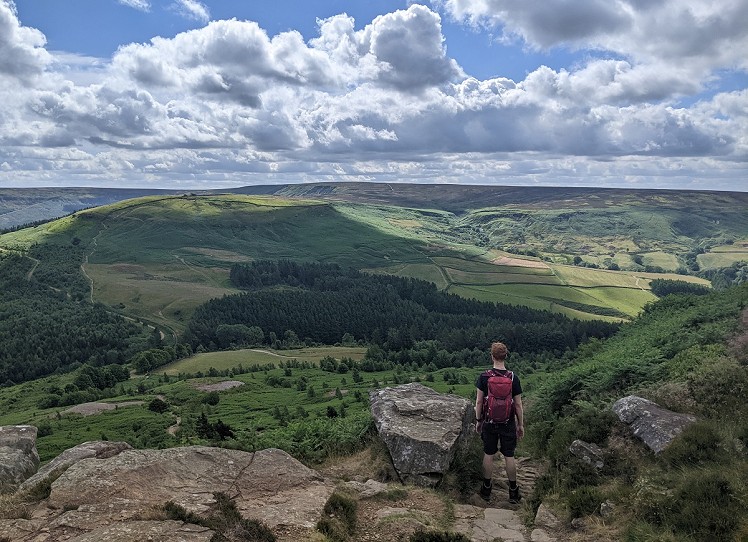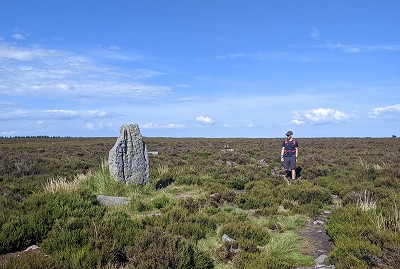There aren't many walks out there that cross a national park via its widest part and over its highest points, all within one day, but that is rather the Lyke Wake Walk's modus operandi. Decades ago this challenging day walk was congested, and big steps were taken to reduce the vast numbers of people making the crossing. These days it is still walked, and there is an annual Lyke Wake Challenge race, but it is far less popular than it once was. In parts, particularly in the eastern half, it could now be described as peaceful. It still isn't easy though!
See our article on this route
Detailed description
This has been viewed 2,060 times
Download
OS maps and some other mapping apps don't allow waypointsStatistics
Difficulty: SevereDistance: 40 miles (64.40 km)
Total ascent: 1,377m
Time: 12 – 24 hours (Walking)
to rate this walk.
Summits
Live moor 312 mCarlton Moor 408 m
Cold Moor (Broughton Bank) 402 m
White Hill 398 m
Urra Moor - Round Hill 454 m
Simon Howe 260 m
Additional Information
Start Traditionally, the trig point on Scarth Wood Moor, but now more practical to start at the Western Lyke Wake Stone opposite Sheep Wash car park, SE467993; Finish The Raven Hall Hotel in Ravenscar is the classic finish point, but the usual place to end now is the Eastern Lyke Wake Stone by Beacon Howes car park, Ravenscar, NZ969012
Nearest town:
Osmotherley
Terrain:
Mostly along big moorland tracks. The first 12 miles is on the Cleveland Way, followed by about 8 miles completely flat on an old ironstone railway line. The second half of the walk is on paths of varying size and bogginess.
Seasonal variations:
Some parts will become boggy after rain, especially the section between Rosedale Head and Hamer.
Public transport:
There are buses to Osmotherley and Ravenscar.
Maps:
OS Explorer OL26 (1:25,000), OS Explorer OL27 (1:25,000), OS Landranger 100 (1:50,000), OS Landranger 93 (1:50,000), OS Landranger 94 (1:50,000), OS Landranger 101 (1:50,000)
Directory Listings:
Find more Listings near this route
Tourist info:
Northallerton (01609 776864); Great Ayton (01642 722 835); Sutton Bank (01845 597 426)
Further Routes
by Chris Scaife
- Stoupdale Head and White Combe 28 Sep, 2023
- Keswick to Ambleside, via the Helvellyn range 26 Jul, 2023
- Black Combe 28 Jun, 2023
- High Rigg 29 Mar, 2023
- Reston Scar, Hugill Fell and Black Crag 15 Nov, 2022
- Kentmere Horseshoe from Kendal 29 Sep, 2022
- Whitbarrow 3 Jul, 2022
- Wild Boar Fell and Swarth Fell - a walk on the wild side 14 Jun, 2022
- Hawnby Hill - A Little Yorkshire Gem 1 Feb, 2022
- Kendal Fell, Cunswick Scar, and Scout Scar 20 Dec, 2021



